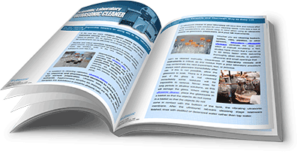How to Use a Precision Scale for Check Weighing
“Net weight one pound” it says on a bag of potato chips. You used to be able to buy a pound of coffee but now while the cans look the same the weights vary. One brand notes 11.5 ounces, another 10.3 ounces. Why is this? More than that, how do we know the can really contains 10.3 ounces of java? It is a conundrum we have to tolerate.
Joking aside, accuracy in weighing or in counting is no laughing matter when it comes to complying with rules governing net content and average weights. It is also important from a cost management perspective. While variances in potato chip and coffee weight is not a serious safety concern, putting more in the bag or can than called for is a cost management issue. Accuracy is a safety issue when it comes to pharmaceutical dosages and similar critical applications. Here is how precision digital scales can help.
Generally speaking, in many weighing applications it is not the absolute weight of an item that is of interest but the deviation of this weight from a nominal value. An example is the weight control of packages of equal weight (11.5 ounces of decaf) or the process control of parts or pieces during a manufacturing process (144 capsules).
The solution is found in tolerance weighing, also called check weighing. Many models of platform scales and precision balances are designed to perform this function. An example is the Kern FIS platform scale with functions that ensure tests can be carried out efficiently – namely by three different display possibilities.
These are simply red, yellow and green pilot lamps that operate when the scale is being used for tolerance weighing. Red signifies below the tolerance limits, yellow above the limit and green signals that the weight or count is right on. An additional display on this particular scale is a bar graph showing where the item(s) being weighed or counted lie within the tolerance range.
After the plus and minus tolerances from the nominal value are programmed into the scale and the tare weight accommodated (if necessary) weighing or counting can begin. Pieces being weighed or counted are placed on the scale for an accuracy reading. Data can be recorded for record-keeping purposes.
The platform scale described above is for weighing applications from 3 to 150 kg (13.23 to 330.7 pounds) Laboratory balances are also available for tolerance weighing measured in grams. The setup procedure is much the same with either visual or audio signals indicating under, over or within the nominal value. These balances likewise can be connected to printers for record keeping.
As with all operations where weighing accuracy is paramount, balances and scales used for tolerance or check weighing should be calibrated according to procedures spelled out by relevant regulatory authorities and in the company’s Quality Management manual.
——————
Do you have what you believe to be an unusual or difficult application where tolerance or check weighing is required? How did you resolve it? Can you point to an experience where introducing tolerance weighing resulted in significant savings to your organization? Please share your experiences.
